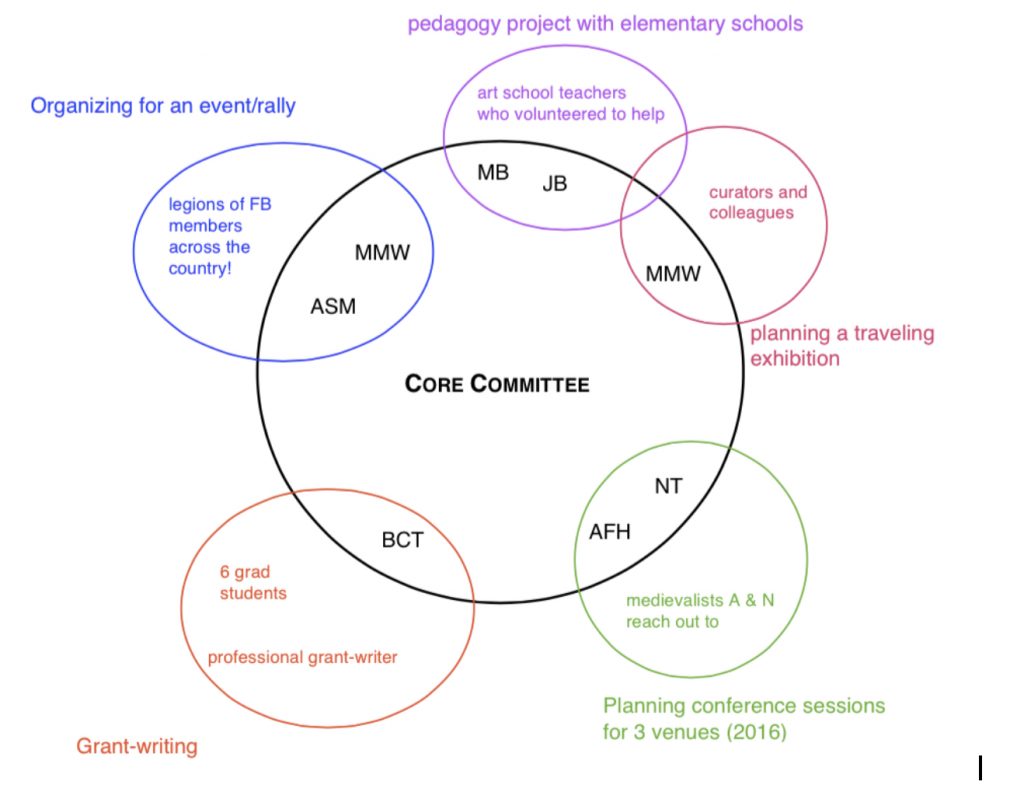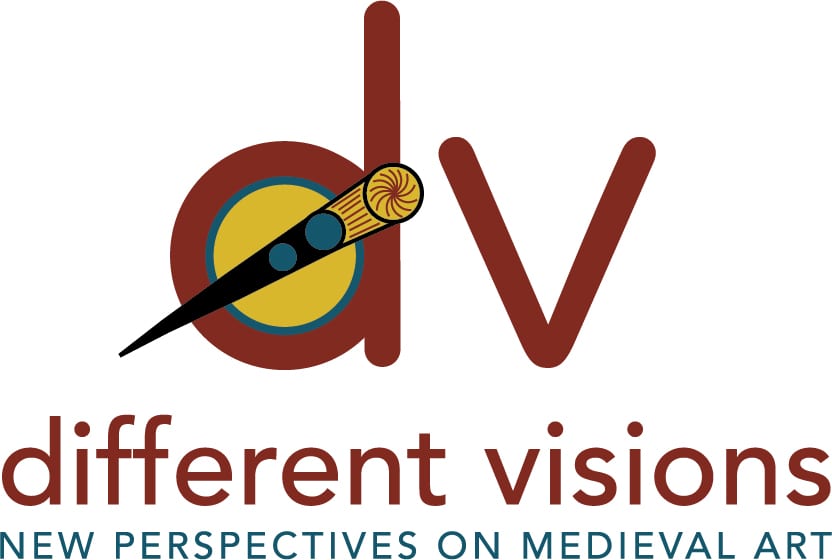Mission Statement
The Material Collective is dedicated to fostering respectful intellectual exchange and innovative scholarship in the study of the visual arts, in the academy, and in the broader, public sphere. We believe that excellent scholarship can grow out of collaboration, experimentation, and play, and we work to create spaces where scholars from many different backgrounds, both traditional and non-traditional, can come together for mutual enrichment.
Vision Statement
The Material Collective will encourage work that explores new modes of thinking about art and culture while recognizing the many insights of the past. We believe that the best scholarship celebrates its relationship with contemporary society, and we seek to foster scholarship that concerns itself with the ethical and moral challenges of the present day, even as it seeks to shed light on the past.
Manifesto
We are the Material Collective, a group of medievalists interrogating visual materials. We seek to:
- cooperate
- encourage
- share
- promote transparency
- touch
- desire
- destabilize
- amuse
- and blunder
As a collaborative of students of visual culture, Material Collective seeks to foster a safe space for alternative ways of thinking about objects.
We strive for transparency in our practice, and we encourage the same in our institutional surroundings.
Our project touches upon both form and content, as we pursue a lyrical and experimental style of writing along with a more humane, collaborative, and supportive process of scholarship.
We encourage spontaneity in writing art history, including an acknowledgement of our subject positions; therefore we embrace the incorporation of personal narrative and reflection in our historical interpretations.
Our specific interests vary, but we are all committed to prioritizing the materiality of things, the relationships between those things and the human beings who experience them, and the intimacy of past and present moments in time.
As we celebrate, dwell in, and embrace the basic materiality of our objects, we work to find ways to foreground the material of the objects themselves into larger historical analysis.
Central to this effort is a desire to support each other as we attempt to create experimental approaches, and to embrace both the successes and potential failures of our ventures into new ways of thinking.
We are also working to increase the legitimacy of these approaches in the academic world, primarily by practicing them, loudly and often.
We are as much a support group as a scholarly group. We share the joys and sorrows of career, life and our academic work.
For us, this is not a mere exercise — we stand by our manifesto. And we revel in this opportunity to raise a glass with all y’all, right here and now.
We value:
experimental processes
risk-taking
transparency, revelation
a blank space
joy in faltering. together
So say we all.
So say we all.
The following Material Collective members composed the Manifesto:
Marian Bleeke
Jennifer Borland
Rachel Dressler
Martha Easton
Martin K. Foys
Anne F. Harris
Asa Simon Mittman
Karen Overbey
Angela Bennett Segler
Ben C. Tilghman
Nancy M. Thompson
Maggie M. Williams
Activism & Advocacy
https://issuu.com/nlc.sf.2014/docs/beyondthestreets_final
One of the Material Collective’s foundational principles is to advocate for real progressive change in academia. Just as we pursue a variety of scholarly interests, we support a range of different causes and movements.
One of the Material Collective’s foundational principles is to advocate for real progressive change in academia and beyond. Just as we pursue a variety of scholarly interests, we support a range of different causes and movements. But we all agree with what Eileen Joy had to say in her introduction to L.O. Aranye Fradenburg’s book, Staying Alive: A Survival Manual for the Liberal Arts (NY: Punctum Books, 2013):
…those of us who work within the humanities must commit some of our most valuable resources (primarily, our always-encroached-upon time, and some part of our inner emotional lives) to academic activism, whether through letter writing, blog polemics, organized protests and strikes, collectivist agitation and intervention, mutual aid initiatives, and books such as these. (p. xxv)
We also appreciate that an activist mode-of-being is not the natural state for many academics, and so we hope to use this platform to communicate more broadly about issues that affect us all. As Fradenburg herself puts it in Staying Alive, “No academic today, in whatever field, can afford to be ignorant of the historical, economic and political circumstances of his or her work.” (p. 30)
Leadership & Organizational Structure
The Material Collective first came together in 2010 as an informal group of colleagues who were interested in collaborating both as scholars and as friends. Our conversations, then and now, are both intellectual and deeply personal. As the Collective has grown in numbers and activities, however, we have discussed ways to create a more structured organization for the times that we need it.
Our decision-making body, the Core Committee, consists of many of the Collective’s founders, and we use a simple majority voting system to approve any project we move forward with.
A few years back, we developed this Model of the MC Organizational Structure:

Figure 1: Model showing relationship of Core Committee to Ad-Hoc Assemblages; example is of 5 hypothetical teams for projects to work on over the course of a year or so.
The design prioritizes projects, which seems to us a quite organic way to create structure: to identify the events and publications we want to initiate or participate in, and then organize groups around them as needed. In this way, we hope to avoid the old academic “standing committee” that never gets anything accomplished!
The Core Committee will, once or twice annually, identify agendas and projects for the coming year, and based on specific needs, create the appropriate Ad-Hoc Assemblages. Every project will have a Core member/liaison who will help to identify additional people to work with and will reach out through social media for volunteers. We like this structure because it also allows mentorship, and after some time it is likely that most of the project ideas will not be generated by the core group—which has in fact already happened several times—so there is growth and development built in.
Please reach out if you have ideas about future directions or projects, or if you’d like to volunteer.
In the meantime, we’re continuing to develop a plan for ensuring a democratic process to help the Core Committee—and the Material Collective—promote positive change.
Interview with the Material Collective
To learn more about Material Collective’s founding and goals, click here to read an interview with the Core Committee in the Rutgers Art Review.
